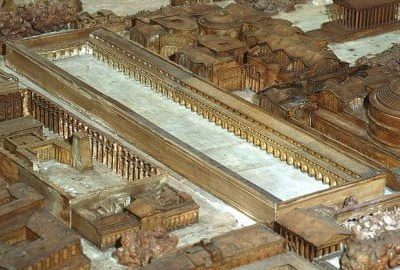The ancient building Saepta Iulia on the Field of Mars was a place where in ancient Rome citizens cast their votes in the so-called tribute commissions (comitiatributa), deciding on the election of lower officials (aediles, quaestors)1 or sometimes the adoption of laws.
The initiator of its construction was Julius Caesar; the dedication took place in 26 BCE thanks to Marcus Agrippa. The marble structure replaced the previous Ovile (“sheep pen”) wooden structure, which was named after it resembled a sheep farm on flat land. Its function was exactly the same as that of Saepta Julia. Its area was about 300×95 m. The building was most likely a large rectangular patio.
According to Suetonius, during the reign of Octavian Augustus, Caligula and Claudius, gladiator fights took place later. Cassius Dio, in turn, reports that August and Caligula additionally organized naumachias, and Nero organized gymnastic exercises there during his reign.
Saepta Julia is visible on Form Urbis Romae – a map of Rome from the 3rd century CE; thanks to this, we have most of the knowledge about the building. To this day, only a fragment of the building wall has been preserved, which is visible next to the Pantheon. It runs along the Via di Minerva and marks the western boundary of this great structure.
It is worth mentioning that in the Field of Mars, near Saepta Iulia, small clay figurines were sold. In December, during the holiday called Sigillaria (literally: “Stautette’s Festival”), children put on scenes depicting the lives of their ancestors – which can be considered the prototype of New Year’s nativity scenes.








